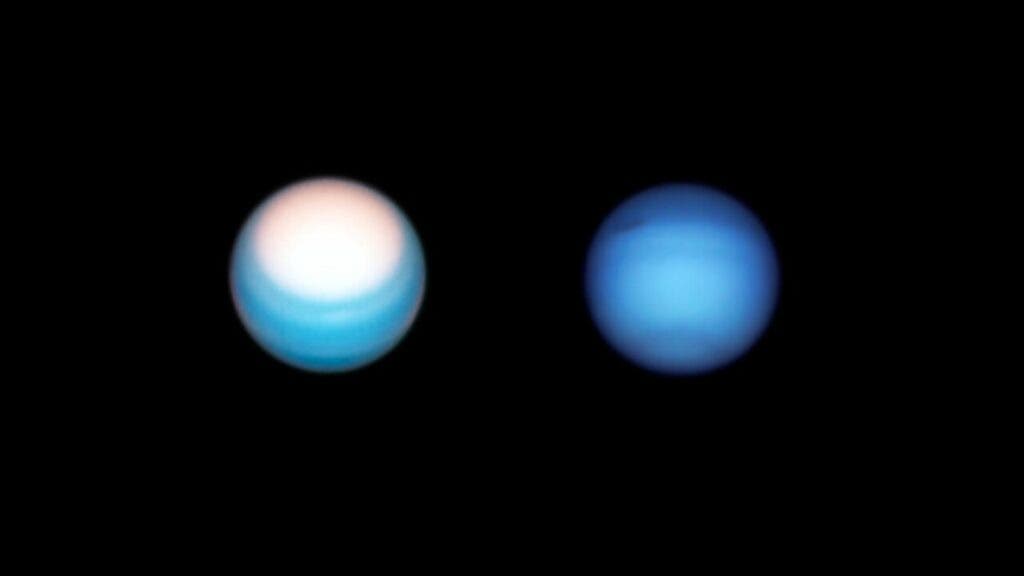
The ice giants Uranus and Neptune are, in many ways, like twins. They’re just about the same hefty size, roughly four times the size of Earth and 15 times its mass. Both have similar daily rotations of slightly less than 17 hours. And close to their superheated cores, it may even rain diamonds.
But despite these similarities, Neptune is dressed in a vibrant deep blue, whereas Uranus is pale blue with a tint of green. Observations performed by astronomers using the Hubble Space Telescope, as well as the Gemini North telescope and the NASA Infrared Telescope Facility, may finally explain why the two siblings look so different.
Using data gathered from these observations, astronomers pieced together a single atmospheric model for both worlds. This model showed that excess haze builds up in Uranus’ atmosphere, explaining why it appears to be a lighter tone than Neptune.
“This is the first model to simultaneously fit observations of reflected sunlight from ultraviolet to near-infrared wavelengths,” Patrick Irwin, Professor of Planetary Physics at Oxford University and lead author of the new study, said in a statement. “It’s also the first to explain the difference in visible color between Uranus and Neptune.”
Both are blue due to the heavy concentration of methane in their atmospheres, a greenhouse gas that absorbs the color red from the spectrum of light and scatters blue light. However, the middle layer of Uranus’ atmosphere, which is made up of haze particles, is twice as thick as that of Neptune’s. If there was no haze in the atmospheres of the two icy worlds, both would appear almost equally blue.
This haze, caused by fine suspended particles, known as aerosols, is whitish in appearance, which explains why Uranus looks paler than Neptune.
On both worlds, methane ice condenses pulling haze particles with them in a shower of methane snow. Neptune has a more turbulent atmosphere than Uranus does, making the former more efficient at producing methane snow. In time, Neptune’s haze layer thinned, resulting in its clearer blue color.
“We hoped that developing this model would help us understand clouds and hazes in the ice giant atmospheres,” commented Mike Wong, an astronomer at the University of California, Berkeley, and a member of the team behind this result. “Explaining the difference in color between Uranus and Neptune was an unexpected bonus!”
But why the thicker haze in the first place? Writing in the Journal of Geophysical Research: Planets, the authors note that the extra haze on Uranus could be explained by an ancient impact with a giant cosmic body, expending a significant portion of the planet’s internal energy and heat sources. The impact would have made Uranus’ atmosphere more sluggish, resulting in less methane snow.
Not everyone is convinced by this explanation, though. Speaking to the NY Times, Erich Karkoschka, a planetary scientist at the University of Arizona, suggests that a more plausible explanation is that the two worlds may simply be physically different. The two worlds aren’t exactly twins, after all, despite their many similarities.
We should learn more about how the worlds both differ and are alike once a new orbiter reaches the outer planets, which NASA hopes to launch in the 2030s. In the meantime, the newly operational mighty James Webb Telescope could reveal new secrets about the atmospheres of Uranus and Neptune.





